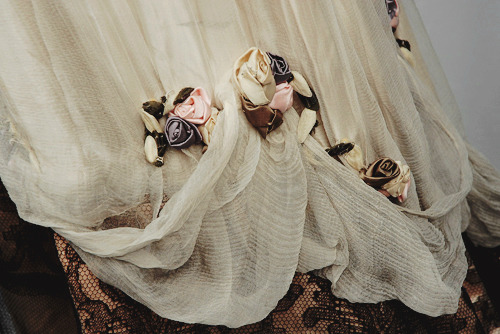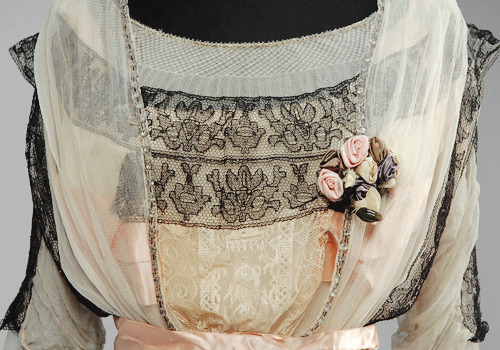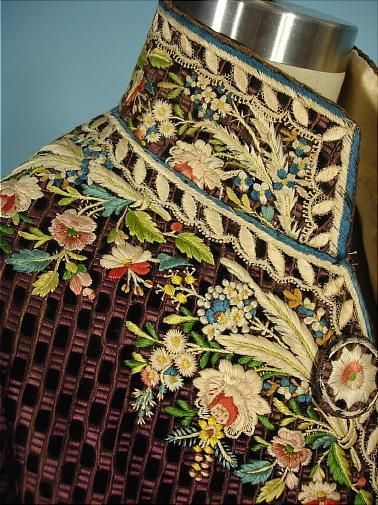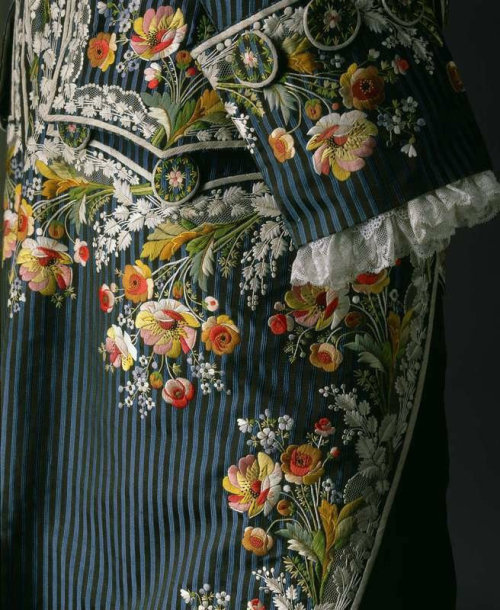Fashion History - Blog Posts
Now I want for summer to come faster so that I can wear some regency dresses😣

Costume Parisien Fashion Plate, 1799
From Paris Musees, les Musees de la Ville de Paris
Somehow there are still way too many people who think a tailor is someone who makes clothes for men (or worse, just a male clothing-maker). Tailoring is a specific trade with a specific set of techniques—historically, the difference has less to do with gender than it does to do with flat-drafting vs. draping methods of pattern-making and fitting. Tailor is not the male version of seamstress, it is gender-neutral and it refers to its own history (and seamstressing/mantua making is ALSO a trade with its own techniques and history fwiw)
I just watched a video about arsenic green in the 19th century and it’s as bad as you can imagine and even worse. They didn’t use it only for clothes, wallpapers, books binding and children’s toys, but also as a FOOD DYE! There were arsenic-coloured candies on sale at your local shop. Arsenic. In. The. Food. Do I need to say more?
An Introductory Timeline of Western Women's Fashion
I think a good place to start to get into dress history is general overview of the whole timeline. Understanding especially how the silhouettes change is really important ground knowledge to build the rest of the information on.
I'll start the timeline from Middle Ages and go till the first world war. I'll focus on upper class England/French sector, so keep in mind that before 17th century there were huge regional differences in fashion inside Europe and class differences too. There is a lot variance, changes and nuance inside any century and decade I'm about to discuss, but I'll try to keep this short and introductory and very simplified. I used a very scientific method of basically what makes most sense to me to divide the periods. I've made sketches what I would consider to be the basic silhouette of the period stripped mostly out of the detail and then I give couple of primary source examples.
12th century (Middle Ages)

Dress was simple one or more tunics over a chemise. They were overly long for upper classes, made out of straight lines. There were loose tunics often worn over another tunic, and tunics with laced bodice called biaut. In France bliaut sleeves often widened from the elbow, in England they often widened in frists.
13th century (Middle Ages)

Clothing was mostly very similar as in the previous century, though bliaut was mostly gone and new popular style was a loose sleeves surcoat.
14th century (Middle Ages)

Tailoring basically revolutionized clothing production, since clothes weren't made out of rectangles anymore and could be better made to fit form. Also functional buttons and lacing was popularized resulting in very fitted styles. The underlayer tunic, kirtle, became a fitted supporting layer.
15th century (Middle Ages)

Improvements in weaving technology and trade and growing prosperity in Europe showed in clothing as excess of fabric and variety of trends. Houppelande, a loose A-lined overdress lined with fur and fastened with a wide belt under breasts, became a very popular clothing item, and in later decades developed into the iconic Burgundian dress (the red dress). Fitted overdress continued to be popular alongside the warmer houppelandes.
1500s-1550s (Tudor period)

In the renaissance era clothing became increasingly structured and elaborate. The bodice was heavily boned and the skirt was also structured.
1560s-1610s (Elizabethan Era)

Both structuring and elaborate decoration reach it's peak during Queen Elizabeth's reign. She became the defining fashion icon of the late renaissance.
1620s-1670s (Baroque)

In baroque era the bodice was still heavily structured, but more curved than the conical Elizabethan bodice. Otherwise though structuring was replaces with dramatic excess of fabric.
1680s-1710s (Baroque)

In the late 17th century there was a huge shift in the clothing industry as mantua, a loose open robe inspired by Japanese kimono, came to dominate fashion. Rigid bodice was replaces by structured under layer, stays. Stays brought back the conical silhouette of Elizabethan era.
1720s-1780s (Rococo)

Mantua developed into the iconic Rococo dress in France, robe à la francaise (first example picture), and in England robe à la anglaise with closed bodice. Rococo fashion was characterized by the wide silhouette of the skirt.

Since Tumblr won't accept more than 10 pictures per a post I'll have to continue in a reblog. So to be continued!
And full photo of first but not sure from where it's from. And I couldn't find a photo without watermarks



Shoes in Vogue since 1910 by Christina Probert

Second one is Forecast | With the New Fall Clothes, The Focus is on the Leg
Photo Irving Penn vogue


Shoes in Vogue since 1910 by Christina Probert
For writers: historical women’s clothing
Those who have been with me for a while know that although I’m not an expert, I’m super enthusiastic historical clothing. Which means I also notice when it’s totally butchered in writing (I’m looking expecially at you, smut fics). So here are some pointers for your historical/fantasy lady’s clothing, for my peace of mind:
Not everything with laces is a corset. Although terms overlap, we mostly only talk about corsets from mid-19th century. Before that you have stays or bodies, maybe even jumps (unboned, quilted garment). You’re pretty safe with simply saying stays.
Stays cannot be tight-laced! You can only tight-lace if your garment has metal eyelets (otherwise the lacing would tear the fabric, ruining the garment), and those only came in mid-19th century. Your 18th century lady won’t be gasping for air (I’m looking at you, PotC)
That being said, even tight-laced ladies are unlikely to gasp for breath.
Your character won’t be wearing a corset/super structured stays under an empire gown/Regency style dress. That would be totally unnecessary (looking at you, Bridgerton). Character instead would be wearing “transitional stays”–a short, boned garment somewhere between a modern bra and a corset–, or lightly boned/unboned stays. The point of these is to push the boobs up, not to slim down the waist/create a silhouette.
Instead of stays, your early 16th century/fantasy character can wear a boned kirtle–in this case, the bodice and the skirt are made up of one garment.
Stays/corsets can be back laced (mostly earlier stuff), front/front-and-back laced (a bit later), back laced with clasps at the front (Victorian)
Some stays can be worn as outerwear. They can be colorful and intricately decorated.
Gentlemen can and will help their lovers dress; they know how women’s clothing works.
There is always a chemise/shift under the stays! (looking at you, The Tudors.) That is your first layer–it protects the character’s skin from chafing and the character’s clothes from sweat.
Stockings are held just under the knee/mid-thigh with garters/ribbons.
No panties! No underwear, whatsoever. Ruck up those skirts and the banging can commence
There’s such a thing as split drawers (19th century)–which is like a pair of knee-lenght underpants, only the two legs are not connected at the groin area.
Ladies can have pockets–they are basically big pouches that can be tied around the waist with a string. They can be worn over or under the overskirt.
If the pockets are worn under the skirt, then they can be accessed via slits on the sides. This happens when the skirt has a kind of “apron like” fastening: basically, the top of the skirt is made of two rectangular pieces, both of them having their own ties. You first tie the back part on the front, then the front part in the back. And voila! Slits on the sides.
Those were just from the top of my head. If you have any question, feel free to ask*–or better yet, look up ladies on the internet who know more than me on this topic, like Bernadette Banner, Karolina Zebrowska, or Abby Cox.
Also feel free to correct me if I said something stupid
A quick history of Vietnamese women’s fashion (part 2: 16th-18th century North Vietnam)
Before we dive in, please note that Hanoi (and by extension North Vietnam) at that time was called Tonkin (東京).
During 16th century, the fashion of North Vietnamese women was similar to that of South Vietnamese women as recorded in Boxer Codex (see Part 1). Below is the relief of the Mạc dynasty’s Dowager Empress Vũ Thị Ngọc Toàn, dated 1562, a National Treasure at Trà Phương pagoda in Hải Phòng province. In the relief, she is wearing an yếm undergarment, with thường skirt and đối khâm coat.

(Image source)
Moving on to the 17th century, in Vietnam Museum of Fine Arts, we can find the statue of Ducchess Nguyen The My dated 1632 depicting noble North Vietnamese women’s fashion. She wore her hair long, with yếm undergarment and đối khâm coat, but in between the layers she also wore a giao lĩnh cross collar robe. Her clothes are richly trimmed with gold decorations.

(Image source)
How about the common North Vietnamese (Tonkin, 東京) woman? The earliest illustration of them I can find is in the Japanese book “Vạn quốc nhân vật đồ thuyết” (Illustrations and explanations about characters from 10,000 countries, 1720). If you are asking yourself if this illustration could instead be about Tokyo (as its Chinese character is also 東京) woman, this could not be the case. In 1720, Tokyo was known as Edo (江戸). It was only in 1868 during the Meiji Restoration that Edo was renamed to Tokyo. Back to the illustration, we can see that during this time North Vietnamese common women wore a giao lĩnh cross collar robe outside, with two layers of thường skirts, with the outer layer shorter than the inner layer.

(Image source)
Illustration of North Vietnamese women in “Hải ngoại chư đảo đồ thuyết” (Illustrations of foreign islands) is also similar. This book is dated to the 18th century too, but I cannot find the exact year.

(Image source)
There is a wide-ranging variety of patterns possible on the giao lĩnh cross collar robe, as can be seen in the below tố nữ đồ (素女圖) also from the 18th century. These women wear their robes loosely so that the top part of yếm undergarment is shown like the statue of Duchess Nguyen The My and their robes is long enough to cover their thường skirts.

(Image source)
The same North Vietnamese women’s fashion style is also recorded in Qing dynasty’s imperial book Hoàng Thanh chức cống đồ (皇清職貢圖) created in mid-18th century, with the noble lady (left) wearing more layers than the common woman (right).

(Image source)
North Vietnamese noble ladies layered multiple giao lĩnh cross collar robe in early 19th century too. Painted in 1804, the below portrait of Lady Minh Nhẫn at the Vietnam Museum of Fine Arts shows that they wore at least 3 layers.
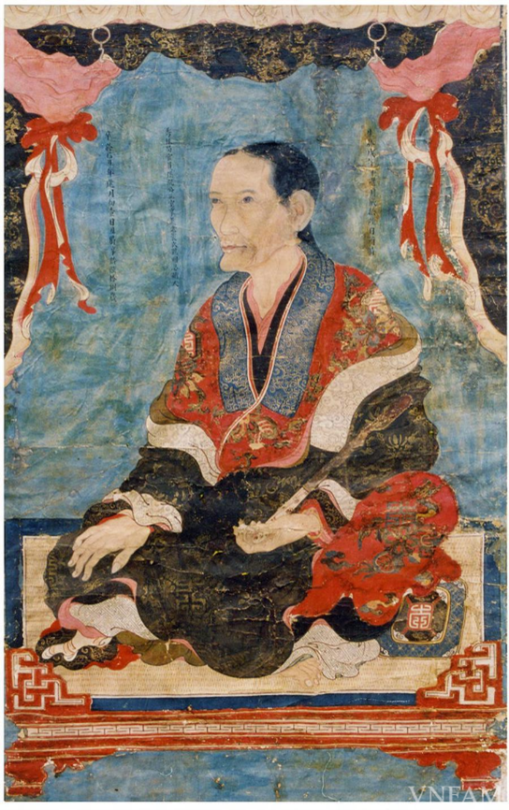
(Image source)
The viên lĩnh round collar robe can also be found in North Vietnamese women’s fashion during this era, as can be seen in the extracts from 18th century paintings “Võ quan vinh quy đồ” and “Văn quan vinh quy đồ” (Celebrated return of the martial/civil mandarin) belonging to the Vietnam Museum of Fine Arts. The robes can either be tucked inside or cover the thường skirt.

(Image source)
By early 19th century, Tonkin (North Vietnam) and Caupchy (South Vietnam) was unified under the rule of Nguyễn dynasty. The new dynasty implemented many changes, including naming the country “Viet Nam” and the former capital city Tonkin (東京) into “Hanoi”. As Nguyễn dynasty emperors are the descendants of the Nguyễn lords who used to rule Caupchy, they continue to enforce the clothings reform started by Lord Nguyễn Phúc Khoát in 1744. The emperors were persistent despite the push back from former Tonkin population. Their numerous decrees about Tonkin clothings reform are recorded in the book “Khâm định Đại Nam hội điển sự lệ” (Collected statutes of the Nguyễn dynasty, 欽定大南會典事例, 1843 – 1914). The women’s reluctance to change was humorously reflected in the following folk rhyme (apologies that my translation has no rhyme):
“In August, the emperor decreed
Banning bottomless pants, making us so fearful
If all of us stay at home, the market will be empty
But if we go, we must robe our husbands of their pants!
If you have pants, go and sell your produces at the market
If not, go to the village gate and watch out for the inspector.”
Tháng tám có chiếu vua ra
Cấm quần không đáy người ta hãi hùng
Không đi thì chợ không đông
Đi thì phải lột quần chồng sao đang!
Có quần ra quán bán hàng
Không quần ra đứng đầu làng trông quan.
(Source)
Although women in North Vietnam gradual accepted to wear the same áo ngũ thân five-panel robe as their sisters in the South, they had a distinct fashion that call back to their favourite giao lĩnh cross collar robe and đối khâm coat. I will explore more on that in Part 3 of this series.
1700's medical illustrators be like "hey boss can I put a rhinoceros behind this anotomically correct sketch of the human skeleton" and the boss be like "only for the books being published in these specific european countries" and then they high-five and go out for drinks
HEY ARTISTS!
Do you design a lot of characters living in not-modern eras and you’re tired of combing through google for the perfect outfit references? Well I got good news for you kiddo, this website has you covered! Originally @modmad made a post about it, but her link stopped working and I managed to fix it, so here’s a new post. Basically, this is a costume rental website for plays and stage shows and what not, they have outfits for several different decades from medieval to the 1980s. LOOK AT THIS SELECTION:

OPEN ANY CATEGORY AND OH LORDY–

There’s a lot of really specific stuff in here, I design a lot of 1930s characters for my ask blog and with more chapters on the way for the game it belongs to I’m gonna be designing more, and this website is going to be an invaluable reference. I hope this can be useful to my other fellow artists as well! :)
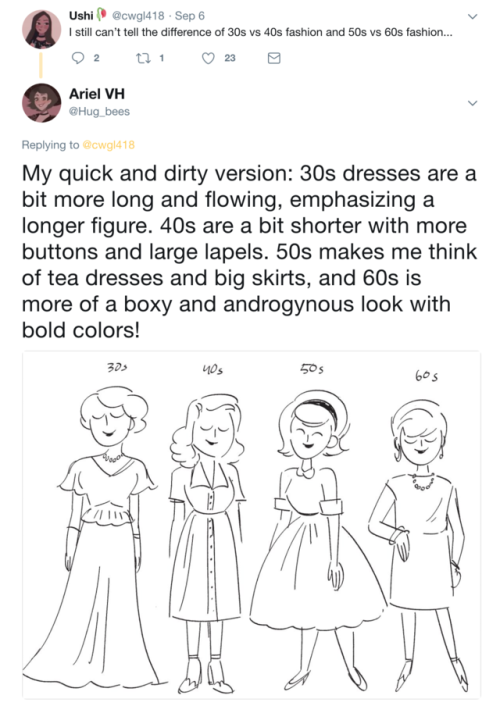
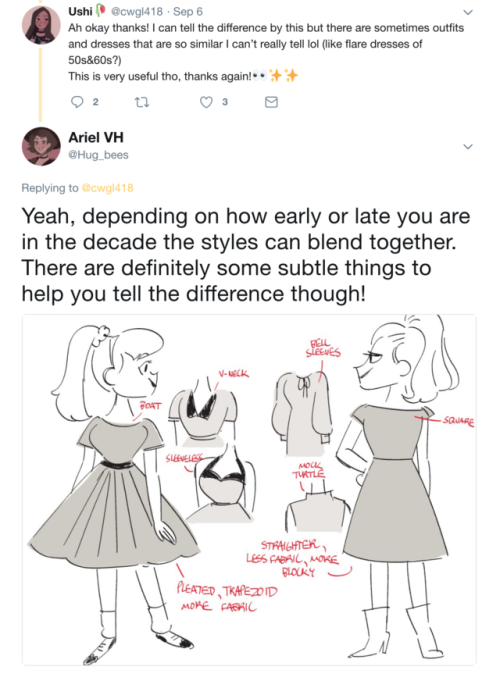
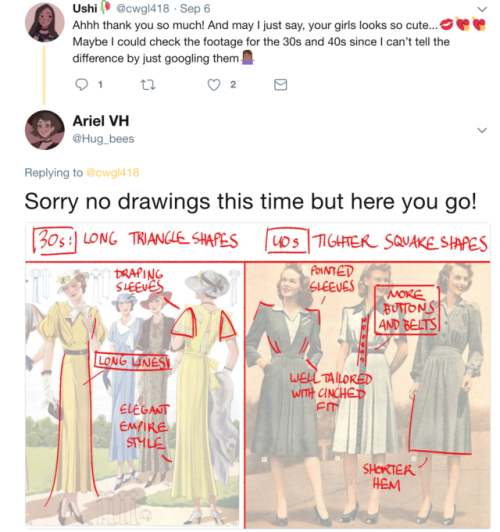
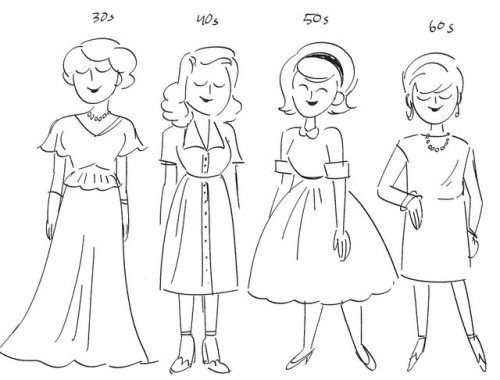
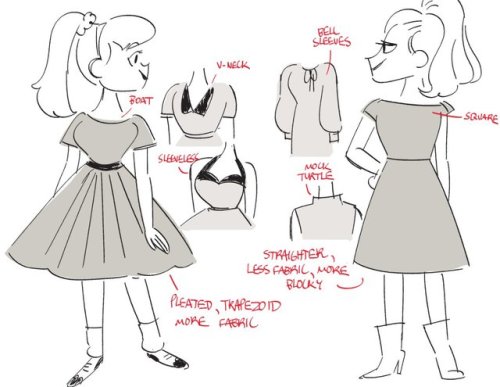
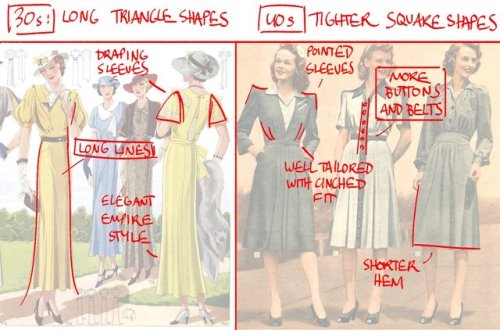
Had an impromptu chat with @ushi418 about fashion history the other day- thought I’d post it here as a quick ref for people!


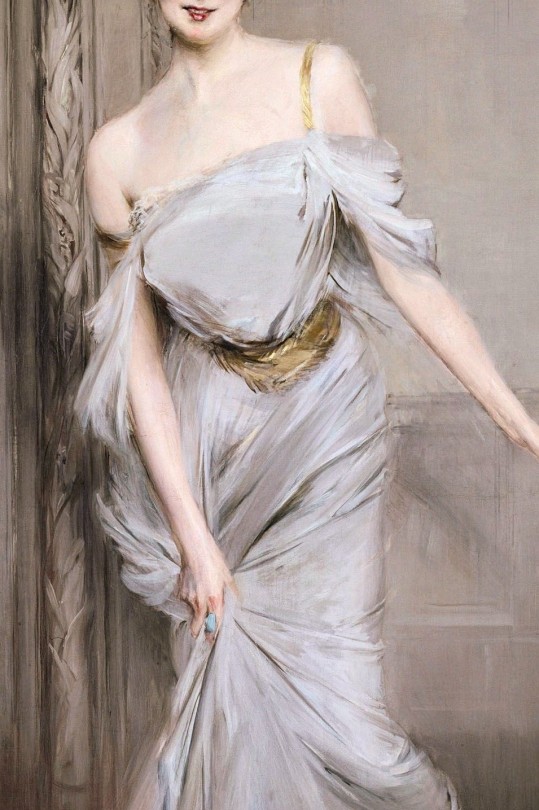

Late Victorian and Edwardian fashion in portraits by Giovanni Boldini (Italian, 1842-1931)
An Argentine aristocrat wearing a robe de style in 1929.



A Carven couture draped chiffon evening gown
early 1950s
Kerry Taylor Auctions

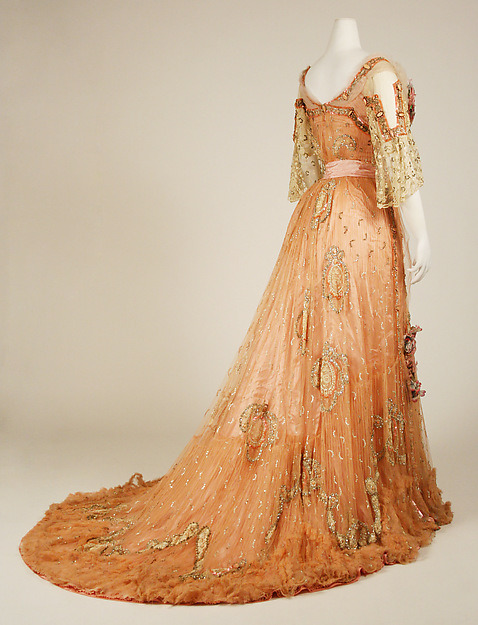




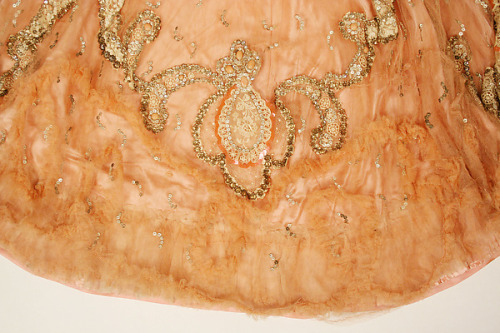
Ball gown
Date: 1900–1903
Culture: French
Medium: silk
Good evening to people with lesbian grandmothers, baby weebs, those who really like historical clothing, emo kids, girls who own real swords, teenagers who knit, people with a large nose, men with thick thighs, anarcho communists, people who like men with thick thighs, enbies, people who can't dye their hair because of school, instagram meme accounts, english teachers, and my hero academia fans.
Pride Flags Colorpicked from This Image



submitted by @edwardian-girl-next-door 🩷💛
I understand the value of artistic liberties but what exactly is Yugio's haircut supposed to be. I've wondered this since childhood
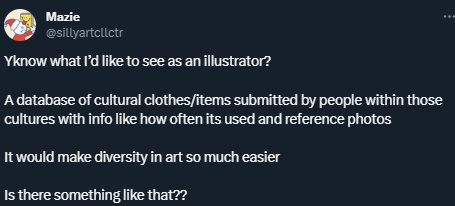
tweet
Something like this would be so colossally helpful. I'm sick and tired of trying to research specific clothing from any given culture and being met with either racist stereotypical costumes worn by yt people or ai generated garbage nonsense, and trying to be hyper specific with searches yields fuck all. Like I generally just cannot trust the legitimacy of most search results at this point. It's extremely frustrating. If there are good resources for this then they're buried deep under all the other bullshit, and idk where to start looking.
How would you describe the art style of the fashion design illustrations? I love the antiquarian looking style
hello my dear! 💖
what an interesting question! 💕💕 either fortunately or unfortunately, you asked either the best or worst person to talk about this lmao 😅😅 as an art history phd student, pretty much all I do is analyze images, so I definitely have some Thoughts™️
first, I'll say that style varies hugely based on time period and publication. even within decades, I've seen a wide variety of styles used, so if you had particular images in mind that you wanted me to talk about, feel free to let me know and I'd be thrilled to discuss those more specifically! ☺️☺️
because there is such a diverse range of stylistic approaches to illustrating fashion plates/images, I'm hesitant to make any sweeping generalizations here, but I will pick out a few themes that I've seen come up a lot:
2d medium vs. 3d object – one of the key features of fashion plates is that, ultimately, they are trying to sell you a garment/style. of course, clothing is three-dimensional, and especially when looking at things like bustled garments, they take up a lot of space in real life that is difficult to represent in a 2d medium. because of this "conflict" between the necessity of depicting the garment and the realities of the medium of drawing/print, we tend to see some odd positioning of the figures. they might be awkwardly bent or twisting in order to show off both a bodice and a bustle at the same time (the figure on the left here is a good example). we also see some "flattening" of the picture plane, wherein the placement of a normally voluminous feature (like a bustle) doesn't really make sense in a naturalistic space, but rather is almost parallel to the chest/bodice of the figure, when in real life it would project backwards rather than weirdly sideways (you can see this in almost any 1880s fashion plate featuring dresses, but this one is a nice example). [also please note that this is not a condemnation of these choices, but rather an analysis of why they're necessary in this medium]
ye olde photoshoppe – connecting to my first point, fashion plates are trying to sell you something, and therefore their artists have incentive to make that product look as attractive/appealing as possible. I do get comments from time to time about how "people don't look like that" or "that's not how bodies work," which, while true, also elide the fact that these artists are not necessarily trying to be naturalistic in their depiction of the human body – they're trying to show you the most marketable version of the human body as determined by the cultural values of their day. just as today we might see impossibly thin models on magazine covers or clearly fake thigh gaps in online retail, so too are the creators of these fashion plates embellishing and exaggerating the human form to make it as appealing as possible to consumers – they're selling a fantasy, not a reality
non-specificity – another thing that is fairly common across historical fashion plates is the non-specificity of facial features on the figures portrayed. if you feel so inclined, take a scroll through the blog and compare the faces of the figures in the illustrations (obviously this does not work in the same way for photographs). you'll likely find that you keep seeing the same face over and over again. what's more, that face has almost no distinctive features, and is almost doll-like in its perfection. given what we've already discussed, this isn't a surprise, since fashion plates are meant to sell garments, and therefore a portrait-like rendering of a specific model isn't really the goal. the figures in fashion plates essentially are dolls – they are meant to be "dressed" in whichever style is being sold, and visually appealing yet non-specific enough to potentially interest a large population of possible consumers
whew! okay I will wrap up my ramblings now, but I hope this was at least a little bit helpful or perhaps mildly interesting! ☺️☺️ as you can see, I love doing this kind of visual analysis, so (as I mentioned above) if you have specific images you wanted me to talk about stylistically, feel free to let me know!! ☺️💕 and thank you again for this great question! 💖💖
if you've made it to the end, thanks for reading my ramblings, and let me know what y'all think about the stylistic features of fashion plates if you have thoughts! 🥰🥰

The Reader, Alfred Stevens. 1860.
Pink is for Boys
"Pink or Blue? Which is intended for boys and which for girls? This question comes from one of our readers this month, and the discussion may be of interest to others. There has been a great diversity of opinion on this subject, but the generally accepted rule is pink for the boy and blue for the girl. The reason is that pink, being a more decided and stronger color, is more suitable for the boy, while blue, which is more delicate and dainty, is prettier for the girl." ~ The Infants' Department, June 1918


[Left: The Blue Boy, oil on canvas, c. 1770, by Thomas Gainsborough.
Right: The Pink Boy, oil on canvas, c. 1782, by Thomas Gainsborough.]
Pink is for girls and blue is for boys. But it hasn't always been this way. Colour coding infants as a way of denoting gender was popular in 20th century America. The problem? Pink and blue? Which is for boys and which is for girls?
In 1927 TIME Magazine asked ten of the "leading stores that sell baby equipment" which colour was for which gender. Four stores responded pink for girls and blue for boys; Macy's (Manhattan), Franklin Simon (Manhattan), Wanamaker's (Philadelphia) and Bullock's (Los Angeles). Five stores responded pink for boys and blue for girls; Best's (Manhattan), Marshall Field's (Chicago), Filene's (Boston), Maison Blanche (New Orleans) and The White House (San Francisco). Curiously Halle's (Cleveland) responded that pink was for both boys and girls.
This debate would continue and it wasn't until mid-20th century that pink for girls and blue for boys became firmly cemented in western culture.
However the idea of colour coding infants dates back to the 19th century. According to La cour de Hollande sous le règne de Louis Bonaparte in 1808 in Holland pink was used to announce the birth of a girl and blue a boy. In March 1856 Peterson's Magazine (Philadelphia, USA) advises that the ribbon on a christening cap should be blue for a boy and pink for a girl. On the 23rd of July 1893 the New York Times writes that for baby clothes it's "pink for a boy and blue for a girl!"

[The Oddie Children, oil on canvas, c. 1789, by William Beechey, via North Carolina Museum of Art.]
During the latter half of the 18th century one of the most popular outfits for young children, regardless of gender, was a white dress with a coloured sash tied around the waist. Pink and blue being the most popular colours, although other colours were worn as well. It would be tempting to assume that the colour of the sash indicated gender but there isn't clear evidence that this was the case. The Oddie Children (above) depicts Sarah, Henry, Catherine, and Jane Oddie. The three girls are all wearing white dresses; two with a blue sash one with a pink sash. We also see Henry Russell (bellow left) wearing a blue sash and Prince William (bellow right) wearing a pink sash.


[Left: Anne Barbara Russell née Whitworth with her son Sir Henry Russell, oil on canvas, c. 1786, by George Romney, via Woolley & Wallis.
Right: Prince William, oil on canvas, c. 1767, by Allan Ramsay, via the Royal Collection Trust.]
Pink was just one of the many colours popular in 18th century English womenswear and seems to have stayed popular throughout the century. On the 3rd of January 1712 The Spectator published an article in which a man recalls seeing "a little Cluster of Women sitting together in the prettiest coloured Hoods that I ever saw. One of them was Blew, another Yellow, and another Philomot; the fourth was of a Pink Colour, and the fifth of a pale Green". On the 1st of May 1736 the Read's Weekly Journal, or British Gazetteer reports that the ladies attending the royal wedding wore gowns of "Gold stuffs, or rich Silks with Gold or Silver Flowers, or Pink or White Silks, with either Gold or Silver Netts or Trimmings;" shoes either "Pink, White or Green Silk, with Gold or Silver Lace and braid all over." On the 24th of May 1785 Charles Storer writes to Abigail Adams advising that fashionable colours in English court dress are "pink, lilac, and blue" such "as is worn at Versailles".



[Left: Frances, Daughter of Evelyn Pierpont, 1st Duke of Kingston, oil on canvas, c. 1700-23, by Godfrey Kneller, via Art UK.
Middle: Mrs. Abington as Miss Prue in "Love for Love" by William Congreve, oil on canvas, c. 1771, by Sir Joshua Reynolds, via Yale Center for British Art.
Right: Mary Little, later Lady Carr, oil on canvas, c. 1765, by Thomas Gainsborough, via Yale Center for British Art.]
In particular pink was popular amongst young women as the colour was associated with youth. Older women who wore pink were mocked as vain for dressing in a way that was seen as improper for their age. On the 31st of January 1754 Lady Jane Coke writes to Mrs. Eyre criticising old women who wear pink:
As for fashions in dress, which you sometimes inquire after, they are too various to describe. One thing is new, which is, there is not such a thing as a decent old woman left, everybody curls their hair, shews their neck, and wears pink, but your humble servant. People who have covered their heads for forty years now leave off their caps and think it becomes them, in short we try to out-do our patterns, the French, in every ridiculous vanity.

[Folly Embellishing Old Age With the Adornments of Youth, oil on canvas, c. 1743, by Charles-Antoine Coypel, via Master Art.]
For Englishmen acceptable clothing way much more limited. In A Foreign View of England in the Reigns of George I & George II Monsieur César de Saussure writes that Englishmen "do not trouble themselves about dress, but leave that to their womenfolk". He explains:
Englishmen are usually very plainly dressed, they scarcely ever wear gold on their clothes; they wear little coats called "frocks," without facings and without pleats, with a short cape above. Almost all wear small, round wigs, plain hats, and carry canes in their hands, but no swords. Their cloth and linen are of the best and finest. You will see rich merchants and gentlemen thus dressed, and sometimes even noblemen of high rank, especially in the morning, walking through the filthy and muddy streets.
César de Saussure warns that "a well-dressed person in the streets, especially if he is wearing a braided coat, a plume in his hat, or his hair tied in a bow, he will, without doubt, be called "French dog" twenty times perhaps before he reaches his destination" and is not only at risk of "being jeered at" but also "being bespattered with mud, but as likely as not dead dogs and cats will be thrown at him."

[Reverend Charles Everard Booth, Captain Griffith Booth, and an Unidentified Man playing Billiards, oil on canvas, c. 1775-9, by John Hamilton Mortimer, via the Royal Collection Trust.]
For Englishmen dressing "plainly" mostly meant wearing blacks and browns. In his book on macaroni, Pretty Gentleman, Peter McNeil found that in contrast most English menswear that he describes as generally consisting of "monochrome broadcloth" macaroni wore a variety of colours including green, orange, yellow, violet, red, white, blue, gold, silver and of course pink.
But it's not just the macaroni of the 1770s & 1780s that wore pink. We see pink in descriptions of feminine men's dress (both real and fictional) throughout the 18th century.
On the 2nd of June 1722 Sarah Osborn writes to Robert Byng:
I believe the gentlemen will wear petticoats very soon, for many of their coats were like our mantuas. Lord Essex had a silver tissue coat, and pink color lutestring waistcoat, and several had pink color and pale blue paduasoy coats, which looked prodigiously effeminate.
On the 18th of October 1729 the Universal Spectator and Weekly Journal published a story where an "effeminate" man's clothes were described as follows:
He had a flower'd pink-colour Silk Coat, with a Green-Sattin Waistcoat lac'd with Silver. Velvet Breeches, Clock'd Stockings the Colour of his Coat, Red-heel'd Pumps, a Blue Ribbon at the Collar of his Shirt, and his Sword-Hilt he embrac'd under the Elbow of his Left Arm,

[Sir Miles Stapylton, 4th Bt of Myton, oil on canvas, c. 1730-35, via Art UK.]
In The Adventures of Roderick Random (1748) the effeminate (and queer coded) Captain Whiffle is described as follows:
our new commander came on board in a ten-oared barge, overshadowed with a vast umbrella, and appeared in everything the reverse of Oakum, being a tall, thin young man, dressed in this manner: a white hat, garnished with a red feather, adorned his head, from whence his hair flowed upon his shoulders, in ringlets tied behind with a ribbon. His coat, consisting of pink-coloured silk, lined with white, by the elegance of the cut retired backward, as it were, to discover a white satin waistcoat embroidered with gold, unbuttoned at the upper part to display a brooch set with garnets, that glittered in the breast of his shirt, which was of the finest cambric, edged with right Mechlin: the knees of his crimson velvet breeches scarce descended so low as to meet his silk stockings, which rose without spot or wrinkle on his meagre legs, from shoes of blue Meroquin, studded with diamond buckles that flamed forth rivals to the sun! A steel-hilted sword, inlaid with gold, and decked with a knot of ribbon which fell down in a rich tassel, equipped his side; and an amber-headed cane hung dangling from his wrist. But the most remarkable parts of his furniture were, a mask on his face, and white gloves on his hands, which did not seem to be put on with an intention to be pulled off occasionally, but were fixed with a curious ring on the little finger of each hand.

[Henry Ingram, 7th Viscount Irwin and His Wife Anne, oil on canvas, c. 1745, by Philippe Mercier, via Art UK.]
On the 28th of July 1780 the London Courant reports:
A few days ago, a Macaroni made his appearance in the Assembly-room at Whitehaven, in the Following dress: a mixed silk coat, pink sattin waistcoat and breeches, covered with an elegant silver nett, white silk stockings with pink clocks, pink sattin shoes and large pearl buckles, a mushroom coloured stock, covered with a fine point lace; his hair dressed remarkably high, and stuck full of pearl pins.
On the 6th of August 1792 The Weekly Entertainer published Sketches and Portraits form the Life by Simon Tueopnrastus which included the following description:
Mercator was a youth of some genius and expectation, but by a strange perverseness of disposition, notwithstanding the extreme natural stiffness of his limbs, he had acquired an early attachment to the most finical and effeminate finery; so that, while yet a boy, he would exhaust every expedient of a fertile invention to procure a laced waistcoat, or the most foppish toy; would dangle a watch-string, with brass seals, from each fob, at a time when the frugal care of his parents would not permit him to wear a watch in either; and would strut in a fine pair of second-hand pink silk breeches, and a light blue coat, with all the formal dignity of—a soldier upon the parade.


[Left: Thomas King in "The Clandestine Marriage", oil on canvas, c. 1792, by Samuel De Wilde, via Yale Center for British Art.
Right: Edward Payne, oil on canvas, by Arthur Devis, via Art UK.]
While pink is mentioned in these descriptions of feminine men's dress it's not singled out as the girl colour the way pink would become in the 20th century. I would argue pink is seen as effeminate not because pink is a uniquely feminine colour but because it was used in fashionable dress. In 18th century England being interested in fashion was seen as an frivolous female trait. Men who showed too much interest in fashion were mocked and ridiculed for their gender nonconformity. "A Man must sink below the Dignity of his Nature, before he can suffer his Thoughts to be taken up on so trivial an Affair, as the Chosing, Suiting, and Adjusting the Adornments of his Person," complains a letter published on the 8th of May 1731 in Read's Weekly Journal, or British Gazetteer:
Decency of Garb ought inviolably to be preserved; nor can there be possibly an Excuse for Dressing like a Merry-Andrew: Rich and coloured Silks are in themselves effeminate, and unbecoming a Man; as are, in short, all Things that discover Dress to have been his Study 'Tis in vain for a Fop of Quality, to think his Title will protect him.


[Left: Madame de Pompadour (detail), oil on canvas, c. 1756, by François Boucher, via Alte Pinakothek.
Right: Elizabeth Wrottesley, later Duchess of Grafton, oil on canvas, c. 1764-5, by Thomas Gainsborough, via National Gallery of Victoria.]
English fashion was highly influenced by French fashion. A popular colour scheme in French fashion was green and pink. A famous example of this colour pairing can be seen in François Boucher's portrait of Madame de Pompadour (above left), she is depicted in a green gown with pink bows and flowers. You can see and example of how this style inspired English fashion in Thomas Gainsborough's portrait of Elizabeth Wrottesley (above right), who is depicted in a green gown with a floral pattern adorned with pink, white and green striped bows.


[Left: Sir Harry Fetherstonhaugh, oil on canvas, c. 1776, by Pompeo Batoni, via Wikimedia.
Right: Francis Lind, oil on canvas, c. 1775, by George Romney, via Mackinnon Fine Art.]
Fashionable Englishmen were also inspired by these French designs. Horace Walpole refers to the popularity of the colour combination writing to Lady Ossory on the 19th of February 1774 "If I went to Almack's and decked out my wrinkles in pink and green like Lord Harrington, I might still be in vogue". Almack's is referring to Almack's Assembly Rooms on Pall Mall which is believed to be the inspiration for the Macaroni Club. (see Pretty Gentleman by Petter McNeil p52-55) In a letter to Lord Harcourt on the 27th of July 1773 Walpole writes of "Macaronis lolling out of windows at Almack's like carpets to be dusted."



[Left: Detail of Stephen Fox from The Hervey Conversation Piece, oil on canvas, c. 1738-40, by William Hogarth, via Fairfax House.
Middle: Sir William Jones, oil on canvas, c. 1769, by Francis Cotes, via Art UK.
Right: Portrait of a Gentleman, oil on canvas, by George Romney.]
Men who wore green seem to have been just as much, if not more, at risk of being ridiculed, or even assaulted, for the colour of their clothes as those who wore pink. In Pierre Jean Grosley's A Tour to London (originally published 1772) he recalls traveling with a young English surgeon who was harassed by Londoners due to his green French frock coat:
At the first visit which he paid me in London, he informed me, that, a few days after his arrival, happening to take a walk thro' the fields on the Surry side of the Thames, dressed in a little green frock, which he had brought from Paris, he was attacked by three of those gentlemen of the mobility, who, taking him for a Frenchman, not only abused him with the foulest language, but gave him two or three slaps on the face: "Luckily, added he in French, I did not return their ill language; for, if I had, they would certainly have thrown me into the Thames, as they assured me they would, as soon as they perceived I was an Englishman, if I ever happened to come in their way again, in my Paris dress."



